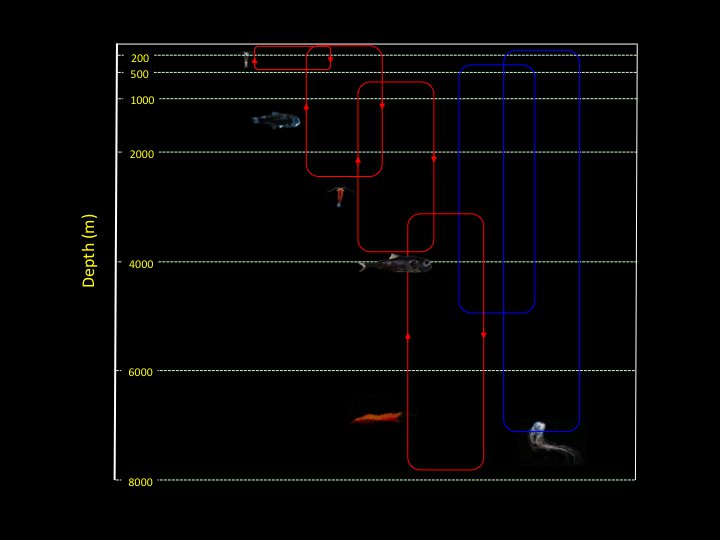The Ocean Carbon Pump
 Vertical migrants feed at shallow ocean layers and release carbon at depth through respiration, defecation, excretion, moulting, and mortality. Vertical migrants can enhance the biological carbon pump by transferring carbon at depth in the ocean, the so-called active flux. This scarcely known process jointly with particulate (passive) flux is hypothesized to match biogeochemical estimations of flux in the ocean. The discovery of the lunar cycle of zooplankton in subtropical waters due to the intermittent presence of diel vertical migrants in the epipelagic zone related to lunar illumination, has unveiled the role of the active flux as rough estimations of this transport match values similar to the particulate flux. The discovery of high acoustic backscatter at meso- and bathypelagic depths below equatorial upwelling zones, closely related to the primary production implies the transference of energy and matter to the deep ocean, promoting true carbon sequestration. Our group is having a leading role in the assessment of active flux in the ocean by measuring zooplankton and micronekton migrations, using large nets, acoustic, and optical systems in order to disentangle the role of these organisms in carbon export and sequestration.
Vertical migrants feed at shallow ocean layers and release carbon at depth through respiration, defecation, excretion, moulting, and mortality. Vertical migrants can enhance the biological carbon pump by transferring carbon at depth in the ocean, the so-called active flux. This scarcely known process jointly with particulate (passive) flux is hypothesized to match biogeochemical estimations of flux in the ocean. The discovery of the lunar cycle of zooplankton in subtropical waters due to the intermittent presence of diel vertical migrants in the epipelagic zone related to lunar illumination, has unveiled the role of the active flux as rough estimations of this transport match values similar to the particulate flux. The discovery of high acoustic backscatter at meso- and bathypelagic depths below equatorial upwelling zones, closely related to the primary production implies the transference of energy and matter to the deep ocean, promoting true carbon sequestration. Our group is having a leading role in the assessment of active flux in the ocean by measuring zooplankton and micronekton migrations, using large nets, acoustic, and optical systems in order to disentangle the role of these organisms in carbon export and sequestration.